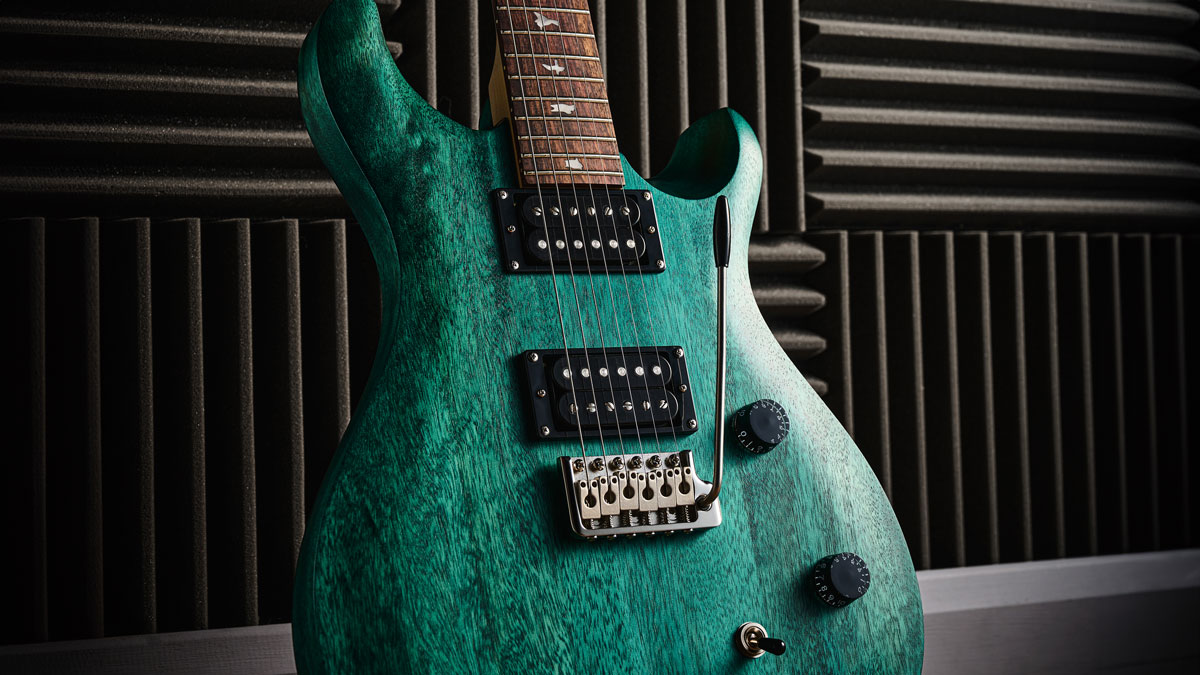Guitar World Verdict
For any player, at any level, needing to cover a lot of sounds, this really takes some beating: the pared-down essence of PRS, if you like, and a guitar we really can’t fault. Try one of these before someone realises they’ve made a mistake with the price.
Pros
- +
Stripped-down vibe.
- +
Crisp execution we’ve come to expect from the modern PRS SE. Expansive sounds.
- +
That price!
Cons
- -
Nothing. Just get your order in quick…
You can trust Guitar World
It’s hard to second-guess PRS these days. Having only just released a trio of new SEs for its 2024 line-up, including the Swamp Ash Special and CE 24, the company has released yet another one: a Standard Satin version of the still-fresh SE CE 24.
PRS fans will know that ‘Standard’ refers to an all-mahogany body, rather than the more commonly used mahogany back with a figured maple cap. This all-mahogany style dates right back to the first PRS guitars of 1985.
Originally, there was just the maple-topped Custom and the less expensive all-mahogany ‘PRS Guitar’, which became the Standard around 1987. The genus of this new SE whizzes back to the following year when PRS’s first bolt-on electric guitar was launched, the Classic Electric, which soon became the CE.
There have been plenty of Standards over the years, of course, including a few with satin finishes, and currently the mainly Indonesian-made SE line boasts the McCarty 594 Singlecut Standard, the Standard 24-08 and the Hollowbody Standard (also available with piezo).
But this new model is unique in that both the neck and body have a very light satin finish. And while the glossy maple-topped SE CE 24 lists at $699/£695, this new version drops that to just $/£499 (including a gigbag): it’s the lowest-cost PRS guitar.
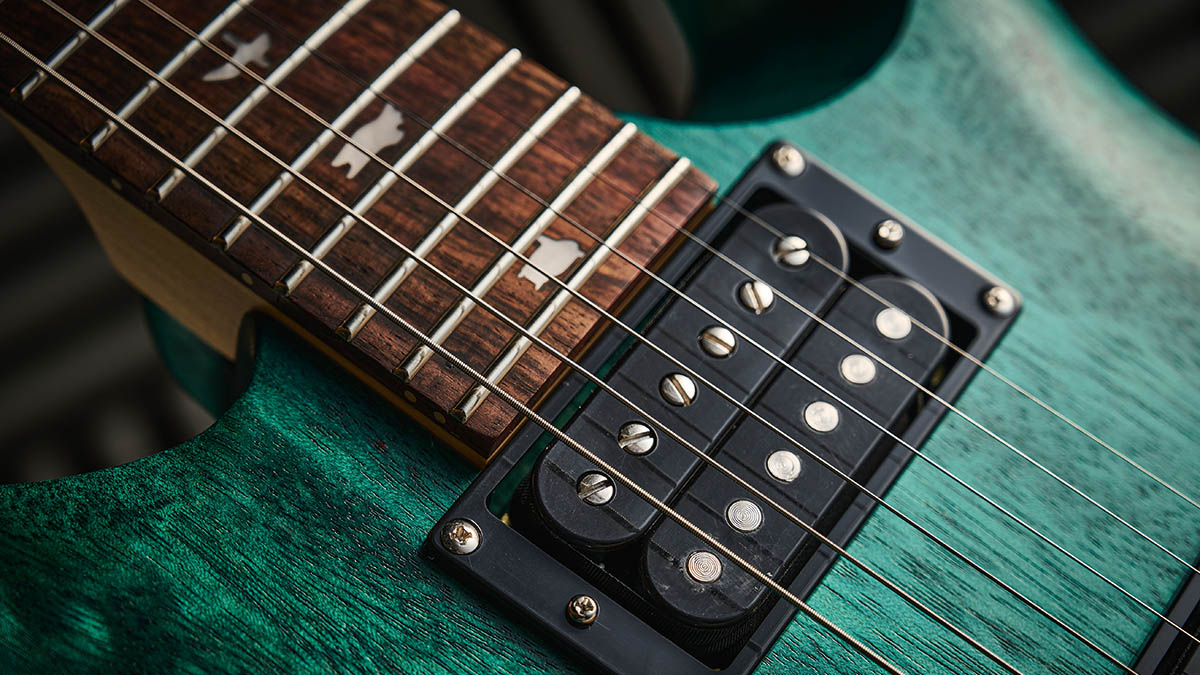
To be honest, at that price we wondered if we might get a bag of parts and some instructions… but, no, the CE 24 Standard Satin is fit to go from the off and any savings are clearly down to the finish type, the lack of a maple-veneered top and, we’d wager, a few trimmed margins.
Available in three translucent colours, our review sample is coined Turquoise, although ‘Forest Green’ might have been more accurate. Like the SE Swamp Ash Special, you can clearly see that the 44mm deep body is three pieces, and while the jointing is immaculate, on the treble side you can see that things are slightly mismatched.
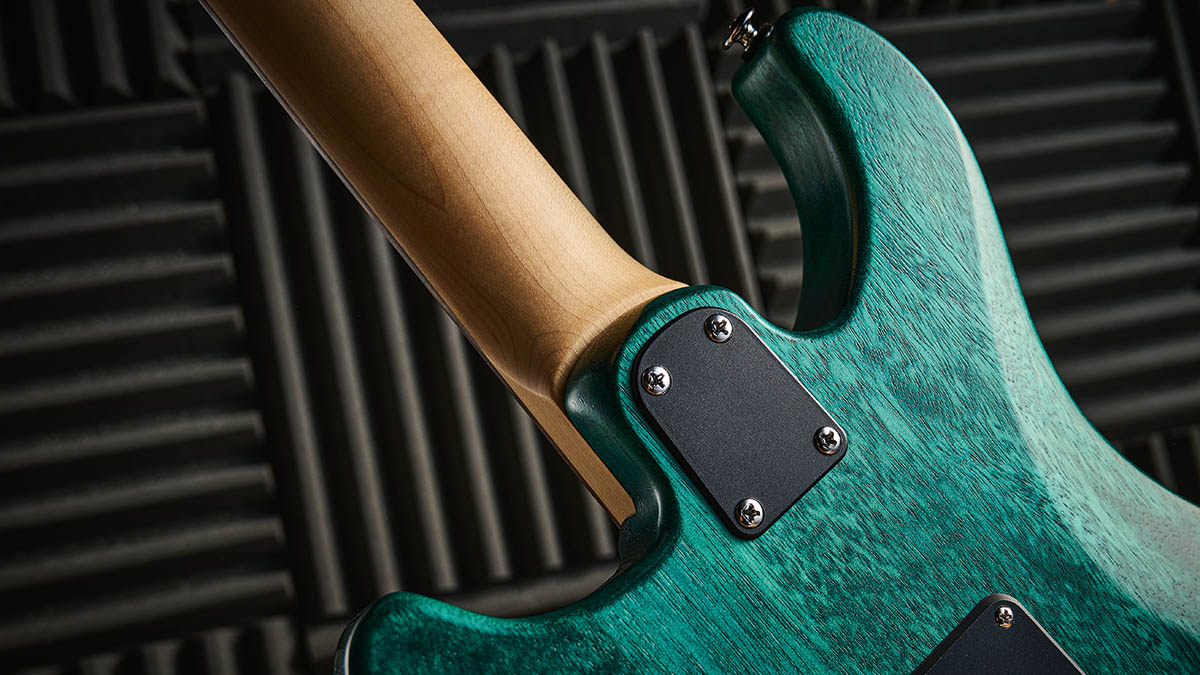
That said, the machining and sanding is superb and with this light, slightly open-pore finish there’s nowhere to hide, unlike a coloured, opaque gloss. In fact, plenty of us might argue that this style looks and feels classier, more expensive even.
Just remember, though, that a finish such as this will mark and ding easily. There’s no binding, like we see on the other glossed SE Standards, the top’s edges aren’t radiused, either, unlike the back, and we have the same lightly dished ‘shallow violin’ carve with a light ribcage cutaway.
Aside from the body change, then, everything else is identical to the glossed model: the same 635mm (25-inch) maple neck with scarf-jointed headstock, a 24-fret rosewood fretboard, the generic enclosed PRS logo’d non-locking tuners, the all-steel ‘cast’ vibrato, a pair of double black 85/15 ‘S’ humbuckers, controlled with a three-position toggle switch, master volume and tone (with a pull switch to voice PRS’s usual partial splits). The pearloid solid bird inlays are retained, even though dot inlays might have suited this slightly more lowly start-up style a little more.
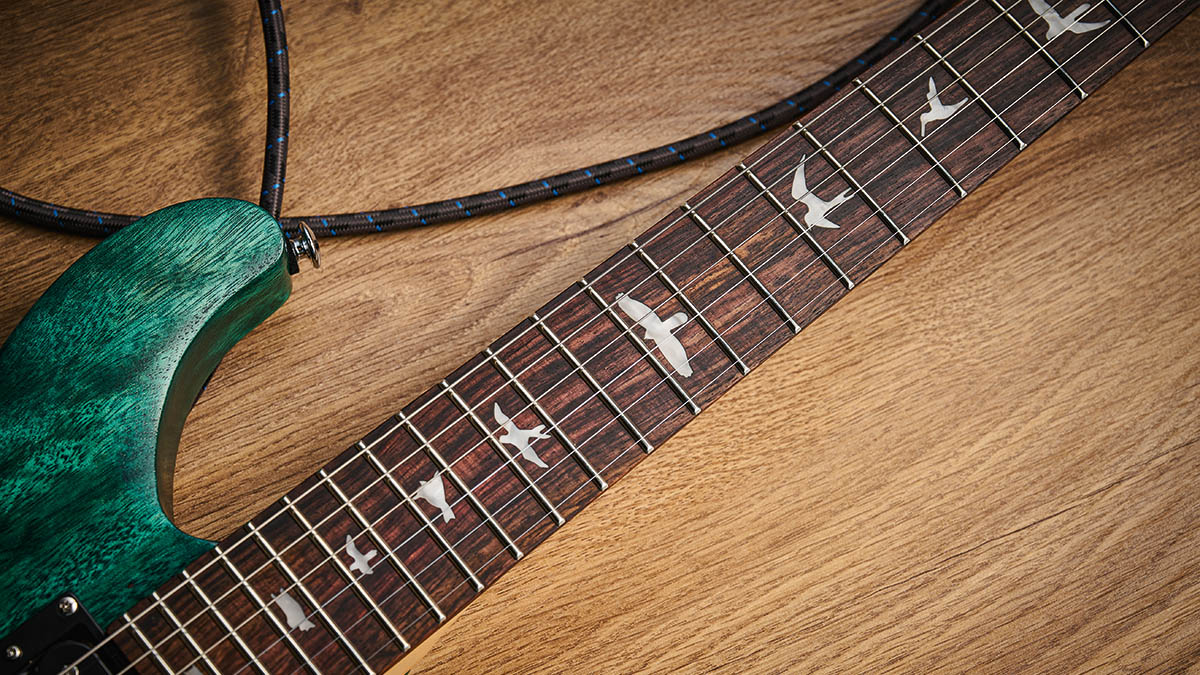
Feel & Sounds
At 3.37kg (7.4lb) it’s virtually identical in weight to the SE CE 24 and a great weight for a solidbody. As we noted in that previous review, the neck could probably do with a rub with a light abrasive or 0000 wire wool to burnish it to a more played-in silky smooth satin, which would elevate it further, along with just a little more fingerboard-edge rolling. But there’s nothing wrong here.
The Wide Thin neck profile suggests some kind of shredder’s neck, but it doesn’t feel like that in the hand. Instead, we have a generous nut width and string spacing – 43.23mm and 36mm respectively – and a depth of 21mm at the 1st fret, 23mm by the 12th.
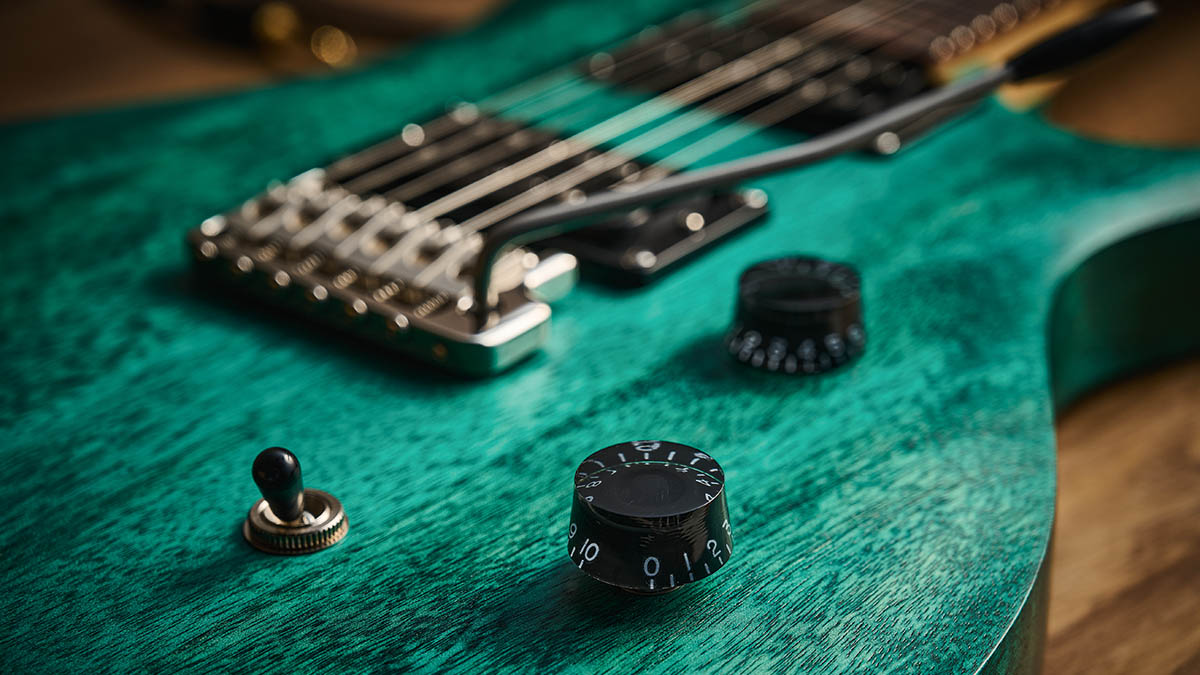
It’s a pretty classic C profile, although the relaxed shoulders do make it feel ‘thinner’ than it actually is. Think ‘all‑rounder’ and you’re not far off. Typically, the medium jumbo frets are perfectly installed and the setup is bang-on. It plays superbly, holds its tuning well, even with some pretty vigorous vibrato use. We’d take it on a gig as is.
The 85/15 ‘S’ humbuckers continue the impression of a well turned-out machine aimed at very mainstream use that, in typical PRS style, offers well-voiced single-coil sounds and bigger humbucker sounds that sit nicely between vintage and modern, both in terms of sound and output. Just like the original PRS proposition, it sits rather beautifully in that middle ground between a Les Paul and a Stratocaster.
How can such a lowly guitar be so perfectly crafted and sound so versatile and good for this money?
Compared with an original alder-bodied Classic Electric, the SE doesn’t quite capture the more vintage-y depth and vibe of the neck humbucker, it’s a little fuller and more balanced, while the bridge has less of the Classic Electric’s mid-focus. There are big rock voices here, but even with some throaty gain there’s welcome clarity.
Pull back the volume and a rootsier sound emerges, plus you’ll find some smooth jangle that removes a little of the new-string sparkle in a good way, while the partial splits move easily into the single-coil realm – not as authentic as the SE Silver Sky but more than usable. And whether it’s the lack of body finish or the material, there’s a very woody character here; the sort of thing that attracted this writer to those original CEs back in the day.
We’re scratching our heads a little here. How can such a lowly guitar be so perfectly crafted and sound so versatile and good for this money?
Verdict
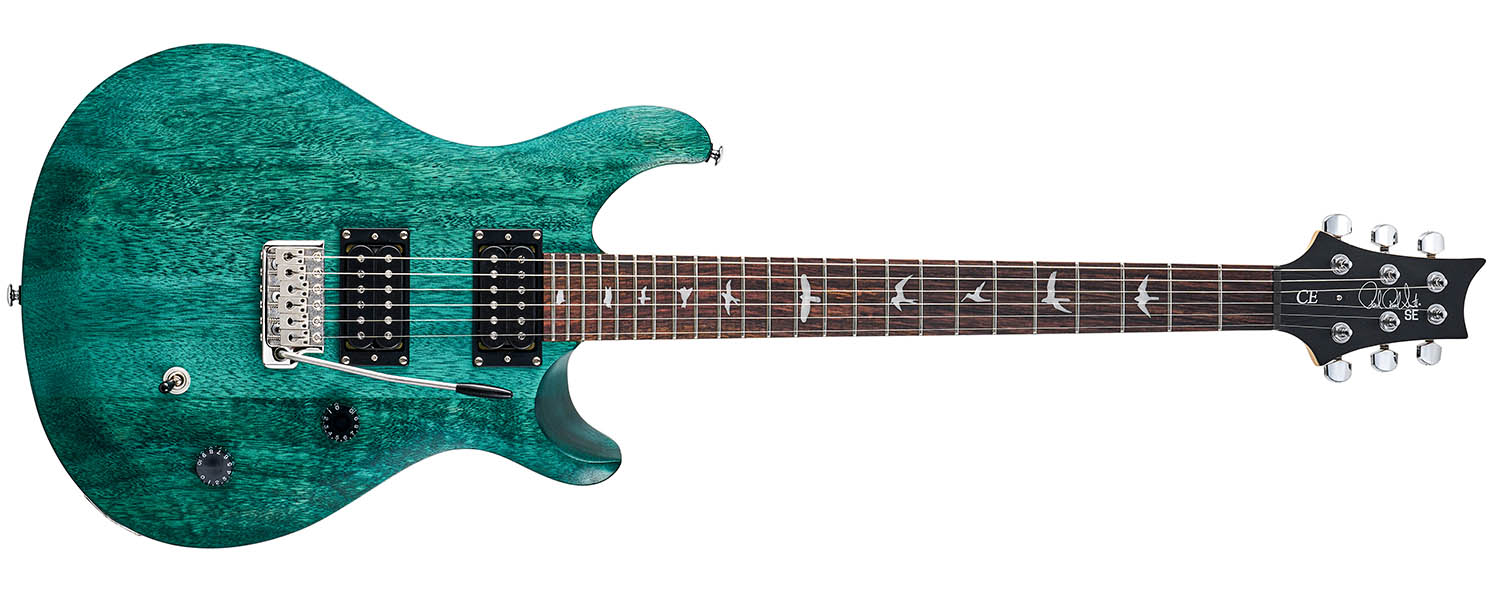
With PRS having only just launched the first-ever SE CE 24, this second Standard version almost seems an afterthought, rather than a carefully considered marketing move. Save for its all-mahogany satin finished body, it’s the same guitar – and if the less-fancy style ticks your box, you can happily save yourself nearly $/£200. Surely, then, its introduction will dilute the sales of the glossed maple-topped version?
We now have a new entry point into PRS world that, on paper, is equally valid for any youngster to start their journey with, or as a spare or modding platform for a more experienced player
But that’s not our problem. Instead, we now have a new entry point into PRS world that, on paper, is equally valid for any youngster to start their journey with, or as a spare or modding platform for a more experienced player.
The thing is, as is, for any player, at any level, needing to cover a lot of sounds, this really takes some beating: the pared-down essence of PRS, if you like, and a guitar we really can’t fault. Try one of these before someone realises they’ve made a mistake with the price.
Specs
- PRICE: $/£499 (inc gigbag)
- ORIGIN: Indonesia
- TYPE: Double-cutaway solidbody electric, bolt-on
- BODY: 3-piece mahogany with ‘shallow violin’ top carve
- neck: Maple, wide-thin profile, bolt-in
- SCALE LENGTH: 635mm (25”)
- NUT/WIDTH: Friction reducing/43.23mm
- FINGERBOARD: Rosewood, ‘old school’ bird inlays, 254mm (10”) radius
- FRETS: 24, medium jumbo
- HARDWARE: PRS patented vibrato (cast), PRS designed non-locking tuners – nickel-plated
- STRING SPACING, BRIDGE: 52.5mm
- ELECTRICS: PRS 85/15 ‘S’ Treble and Bass humbuckers (open coil, double black bobbins); 3-way toggle pickup selector switch, master volume and tone (w/ pull switch to simultaneously coil-split both humbuckers)
- WEIGHT (kg/lb): 3.37/7.4
- FINISHES: Turquoise (as reviewed), Charcoal, Vintage Cherry – satin open-pore body finish; satin neck back
- CONTACT: PRS Guitars

Dave Burrluck is one of the world’s most experienced guitar journalists, who started writing back in the '80s for International Musician and Recording World, co-founded The Guitar Magazine and has been the Gear Reviews Editor of Guitarist magazine for the past two decades. Along the way, Dave has been the sole author of The PRS Guitar Book and The Player's Guide to Guitar Maintenance as well as contributing to numerous other books on the electric guitar. Dave is an active gigging and recording musician and still finds time to make, repair and mod guitars, not least for Guitarist’s The Mod Squad.
“I was playing in the living room, he walked past and shot me this look of ‘Do that again.’ So I bent the string up and he gave me this nod of approval”: Jack Moore on lessons learned from his father, Gary
“I heard the Money solo and thought, ‘This is amazing!’ So I sent David a telegram saying, ‘Remember me? I'm in a band now called Roxy Music’”: Phil Manzanera on his friendship with David Gilmour, and the key to the Pink Floyd man's unmistakable tone
“It’s really quite genius, but also hard to learn – it sounds insane, but sometimes the easiest songs still get me nervous”: Kiki Wong reveals the Smashing Pumpkins song she had the most trouble with
